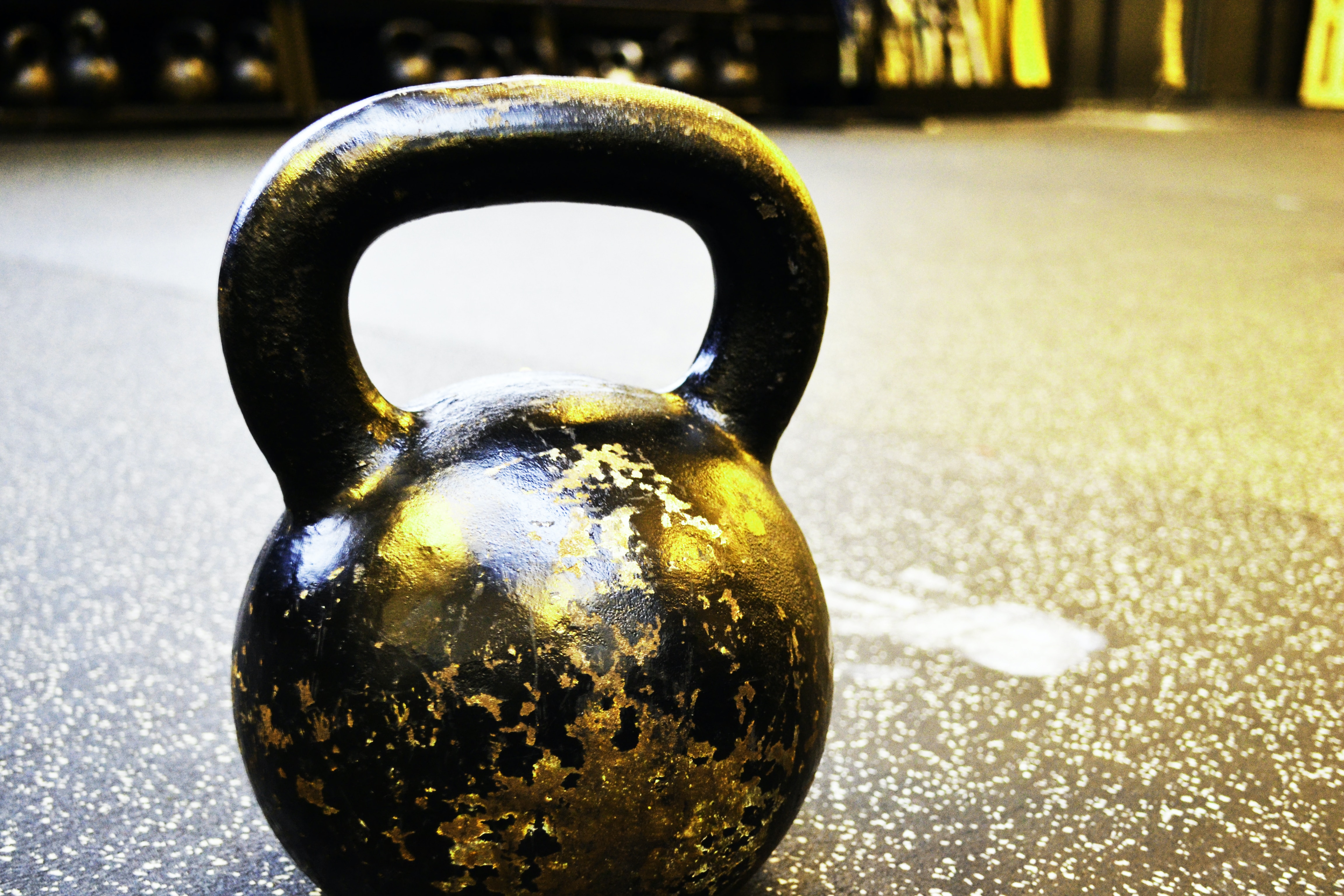Kettlebells: How we got here, why we use them.

The history of kettlebells is mostly told like this…
Much of the conversation around when kettlebells came into play begins around the start of the 18th century in Russia, when the word for it- ‘Giya’- was first published in the Russian dictionary. Back then, KB’s were used as counterweights on market scales, until someone decided that throwing them around might be good entertainment. This is thought to be the beginning of using kettlebells for weight training.
The story continues to the late 1800’s, naming Russian physician Vladislav Kraevsky as the country’s founding father of kettlebell usage for olympic weightlifting.
But the truth is, there’s evidence of Kettlebells being around earlier, and in other countries…
Check out this enlightening article that talks about Elise Serafin Luftmann, one of the earliest strongwoman known in history, from a German speaking region of Bohemia in 1830.
Kettlebells have evolved from a sport popularized in 1985 in the Soviet Union- credited to Valery Federenko, a former Kyrgyzstan KB champion who brought KB’s to America- to a tool for general fitness all over the world in the early 2000’s (often attributed to Belarusian Pavel Tsatsouline and his certification course ‘The Russian Kettlebell Challenge’).
Kettlebells have consistently gained in popularity since then, showing up in gyms- and becoming a home fitness mainstay- more and more each year.
What makes KB’s special anyway?

One of the main reasons KB’s have become so popular is the variety of uses.
In general, KB’s are used in two different ways: Ballistics and Grinds.
Ballistic exercises train your body to both create power and absorb it. Moves like cleans, snatches, and swings are all examples of the dynamic nature of Ballistic moves.
Let’s look at the swing to explain this further.
When you swing the bell back between your legs, you’re building power to get the bell up. Once you hit the top of a swing, your body needs to control all that power to decelerate the downswing.
This training of the fast twitch muscle fibers improves their ability- and endurance- to contract with force and speed. Great for athletes, but also great for the average person who might need to sprint to catch their dog off leash- especially when they’ve gotten REALLY far away from you (am I the only one?).
Grinds are those that are the traditional strength building moves, controlled and constant tension exercises. Things like deadlifts, presses, squats- all challenge your muscles ability to maintain tension.
These exercises not only create strength to lift and move things with ease, they also allow your body to find proper alignment within these types of movement.
Said another way, ballistic moves use momentum and some speed, grinds use control and a slow tempo.
What makes them different from other equipment?
Let’s talk about barbells first.
The shape of the barbell creates a stable and fixed position- two hands and equal weight distribution- from which to move. Definitely some pros to this- like a solid place to go heavier. But this position limits your range of motion that you just might need…
There isn’t a lot of wiggle room when pressing a barbell overhead- the path is pre-determined and sturdy.
But what if that path doesn’t work for your shoulders? Or what if you’re dealing with mobility issues in ONE shoulder and not the other?
With kettlebells, you have some wiggle room. Because you have just one hand on a bell, it allows for your shoulders to work independently- and follow a more natural path overhead (like you would press for most things- because in life we aren’t usually pressing a fixed bar with equal weight).
Dumbbells give you that wiggle room that barbells don’t.

But like barbells, the handle of the weight itself is between two fixed and even points. This creates a safe- and predictably even path from which to press- and allows for that natural path of movement that your body wants to take.
But a DB is NOT a good shape for ballistic exercises. Although it’s doable, it’s pretty awkward to swing or clean a dumbbell.
And makes for a very bumpy transition from a ballistic move into a grind (ever try a single arm swing into a press with a dumbbell? Not so great).
Some other benefits of KB’s:
✔️The shape gives more bang for your buck.
The off-balance shape of the KB not only forces your body to balance through every movement which makes it more functional (again, life isn’t balanced), but also highlights weaknesses and compensations and allows you to work on them independently. I’ve yet to meet someone who is perfectly balanced in strength throughout their whole body.
✔️KB’s offer endless variety.
You can press a bell in many directions, or squat holding weight on just one side of your body, or clean a bell with one hand and from a side facing position. You can also transition from exercise to exercise seamlessly. They make it easy to move from a grind (like a squat) to build strength, right into a ballistic move (like a swing) to build power. AND you can switch from one hand to the other. Not so easy with a barbell or dumbbells
✔️They add both fun- and confidence- to your training.
I’ve trained hundreds of humans who had zero kettlebell experience before they met me. And I’ve seen firsthand what learning how to swing a bell can do to a persons morale. Handling a big cast iron bell is some serious badassery- and it’s also pretty exciting too.
Although kettlebells are a fantastic tool, there's a learning curve to using them. And just like literally anything, you can hurt yourself if you don't know what you're doing.
If you need a place to start, you can try 14 days of FREE access to the first week of my Kettlebell Skills course, THE BLUEPRINT, right now.



